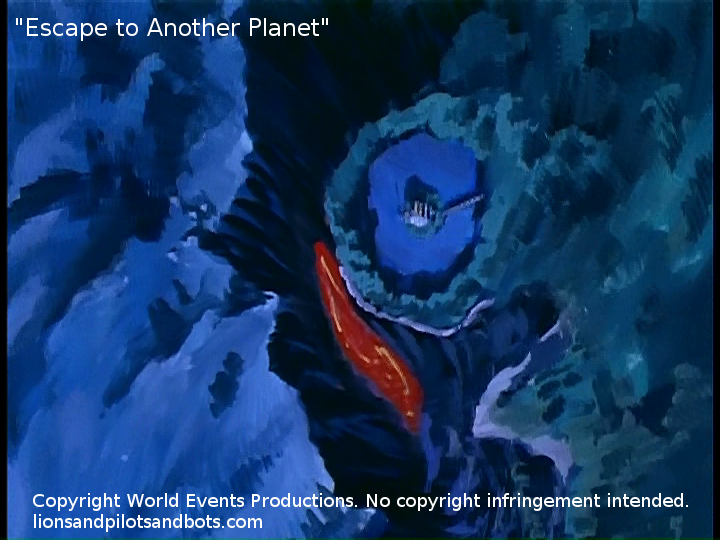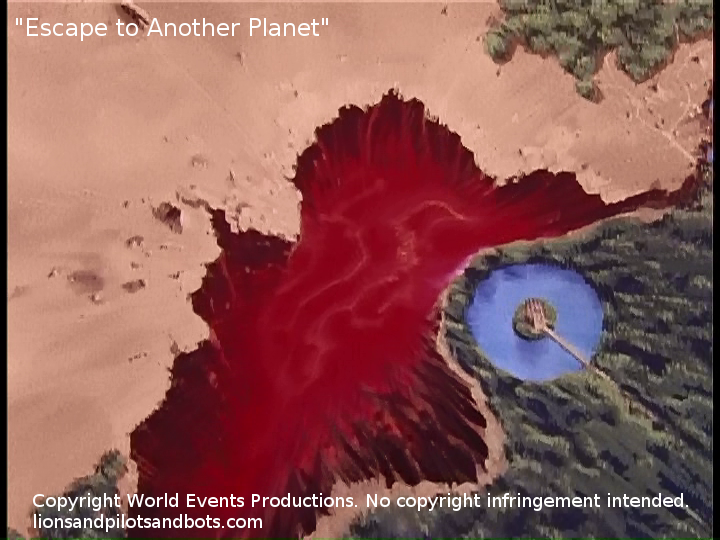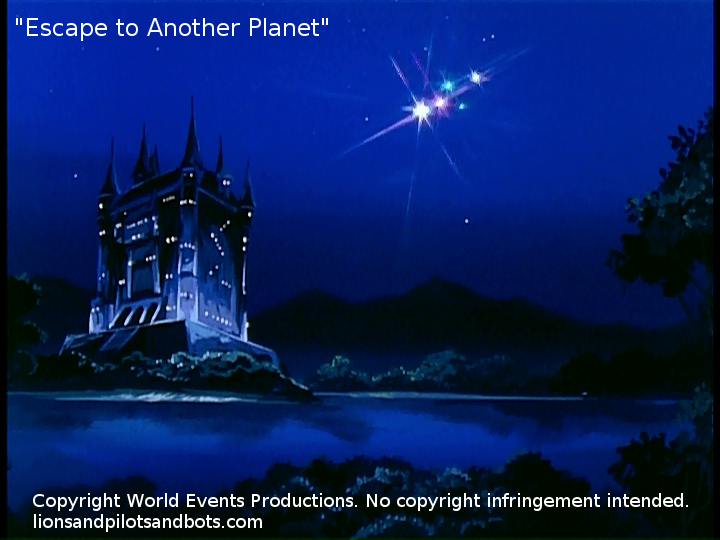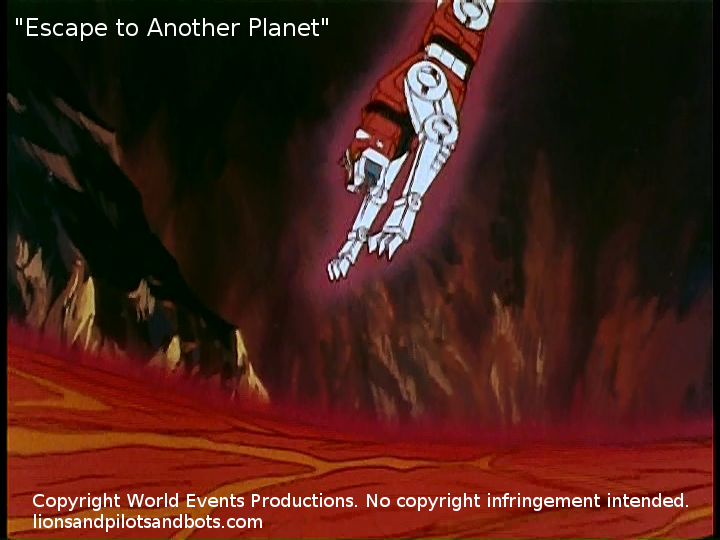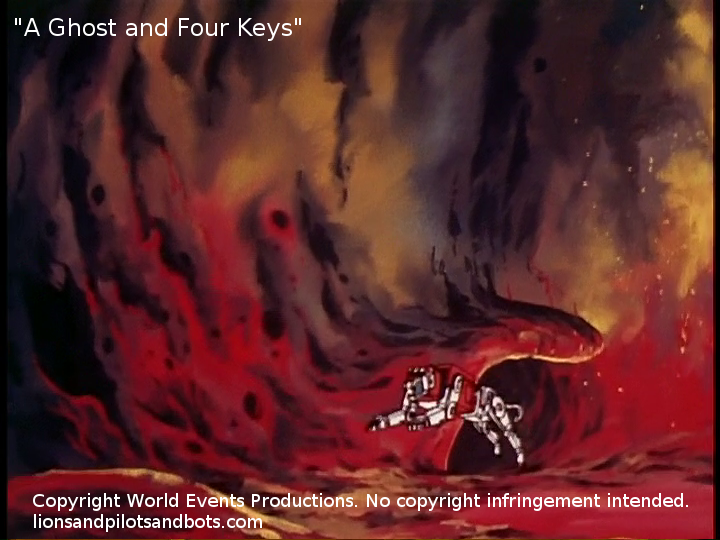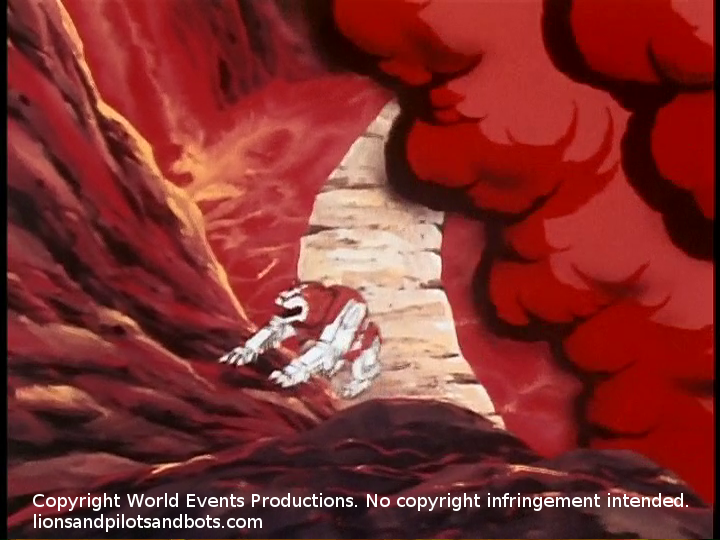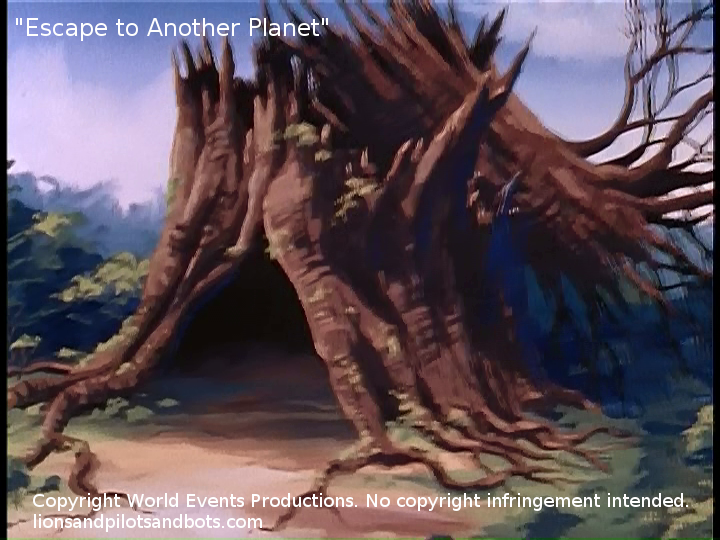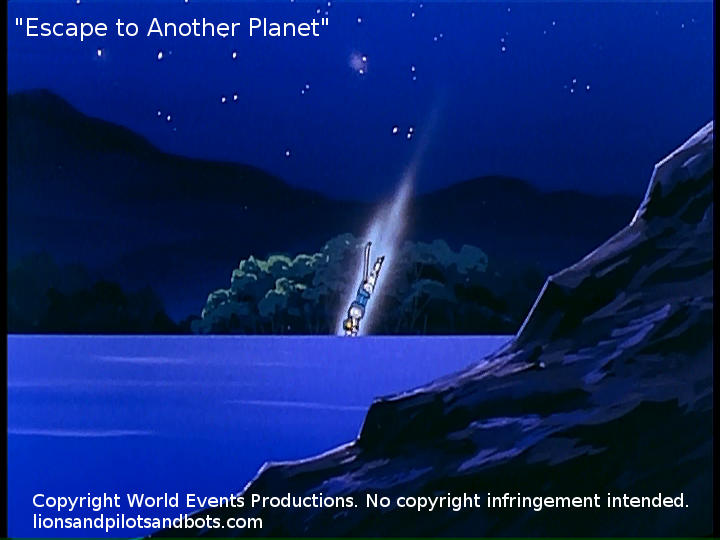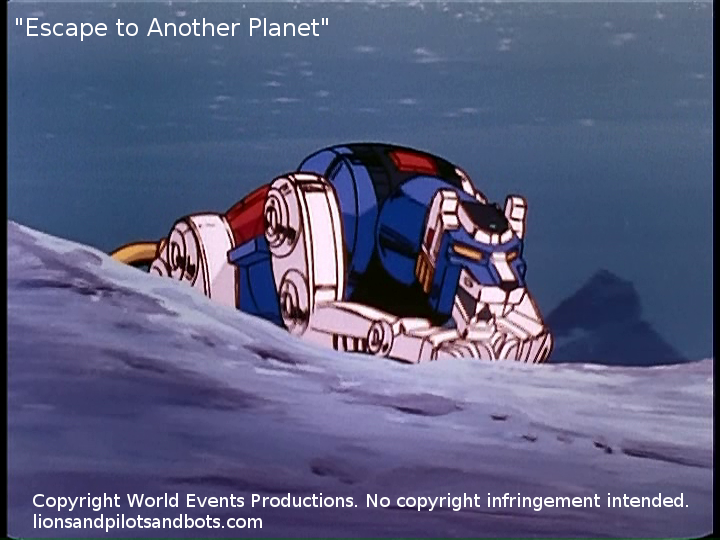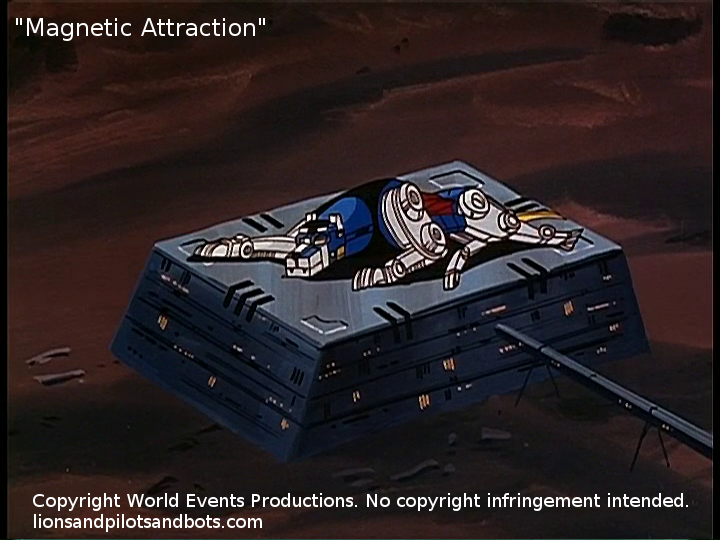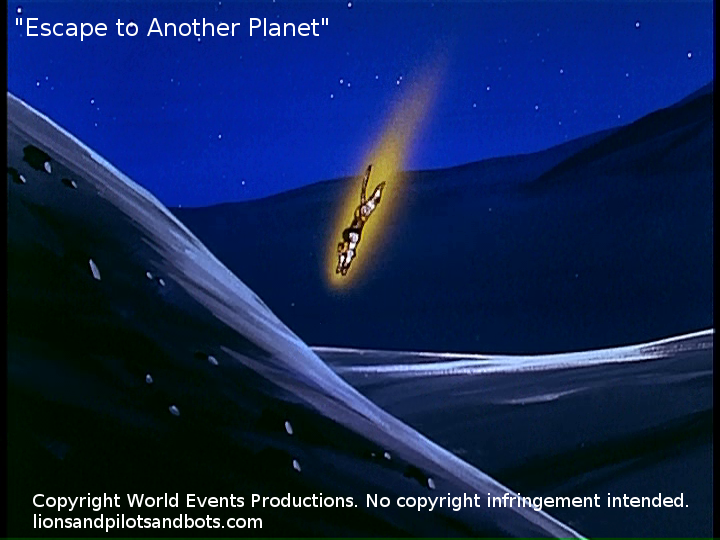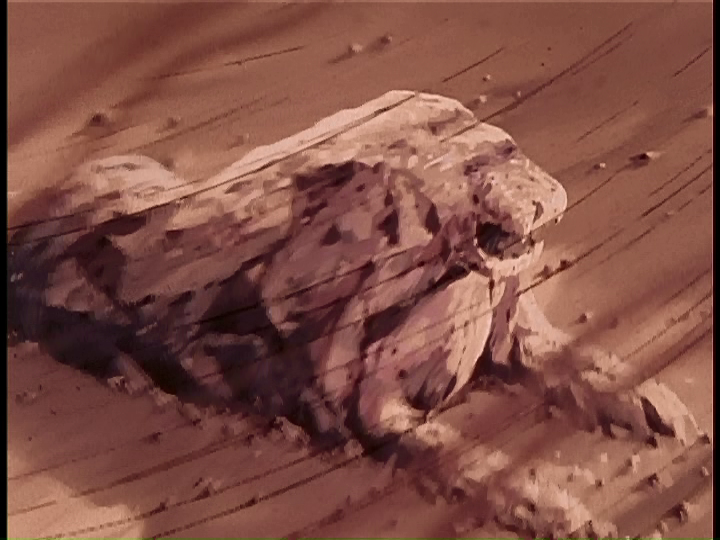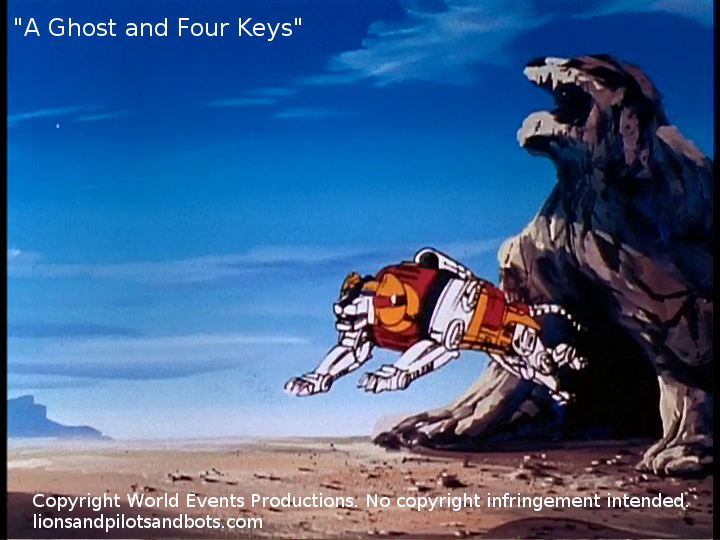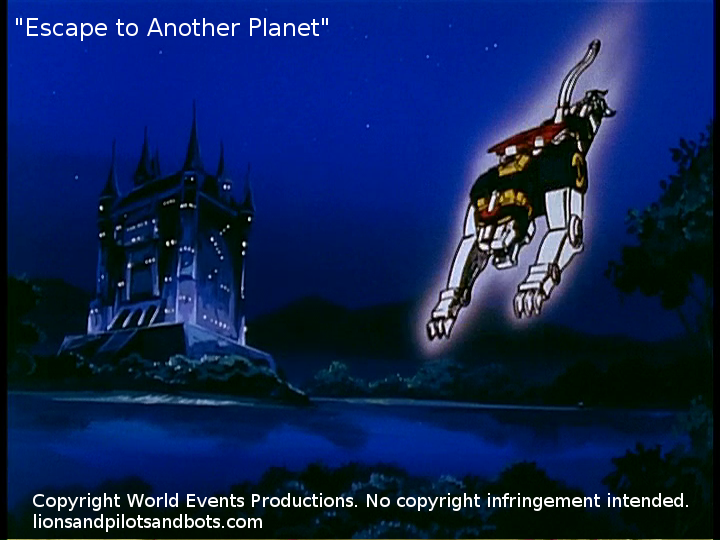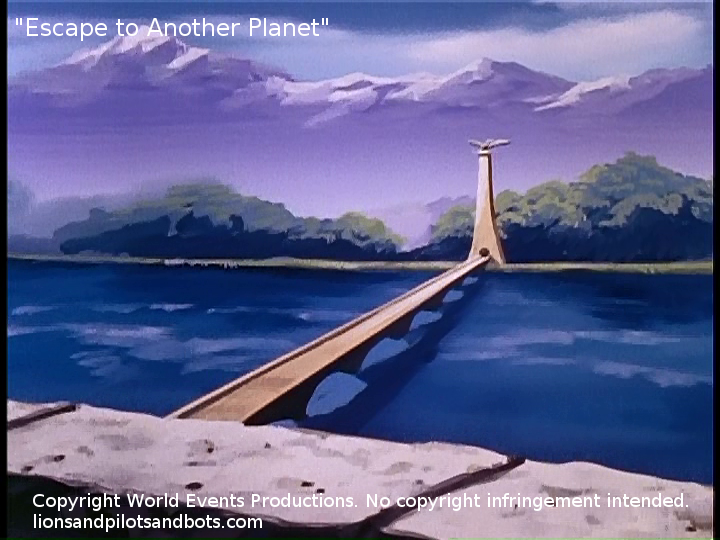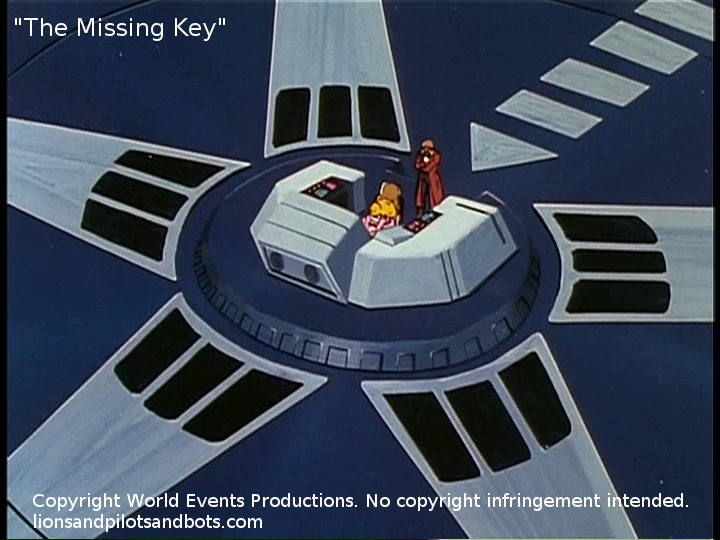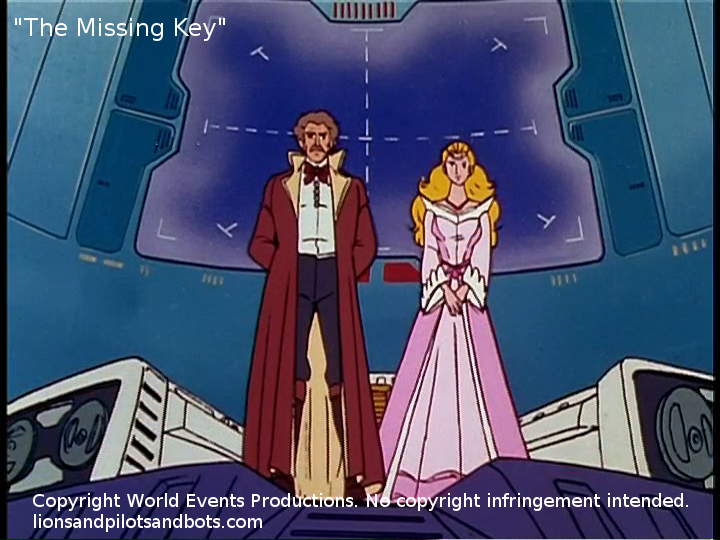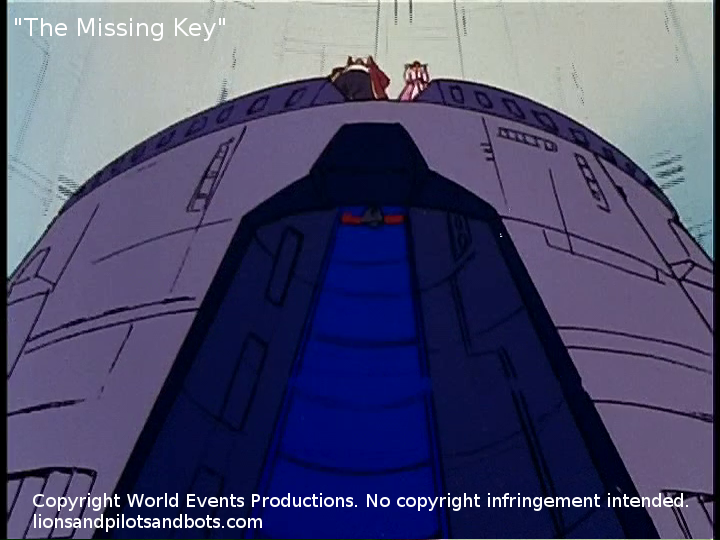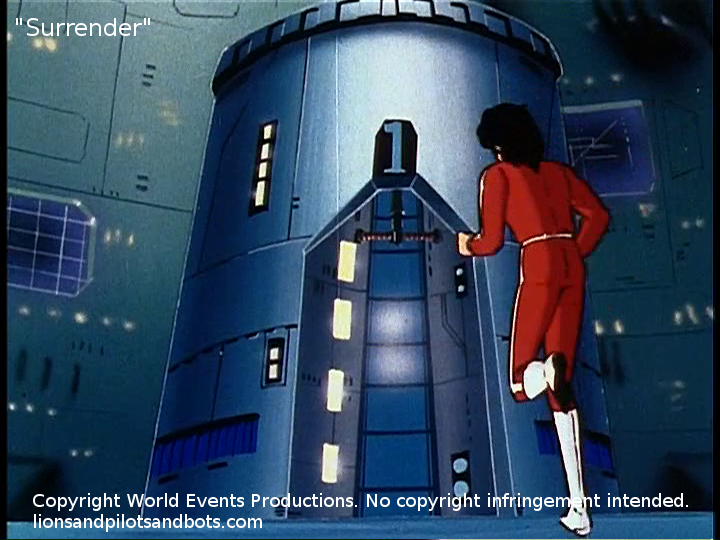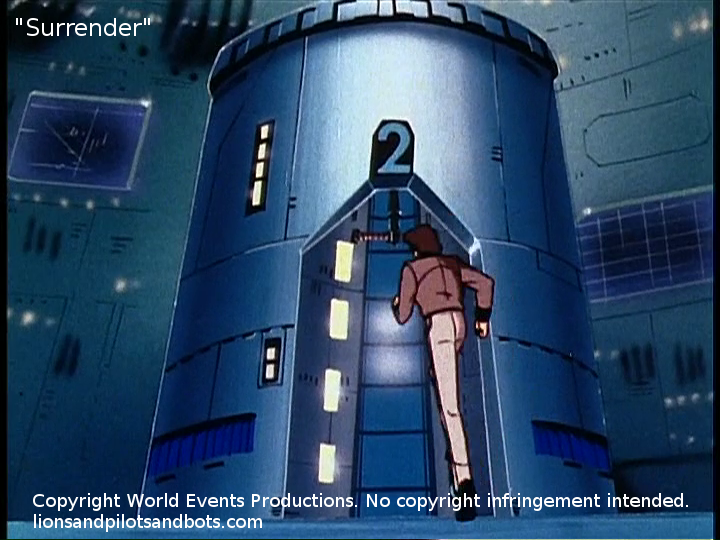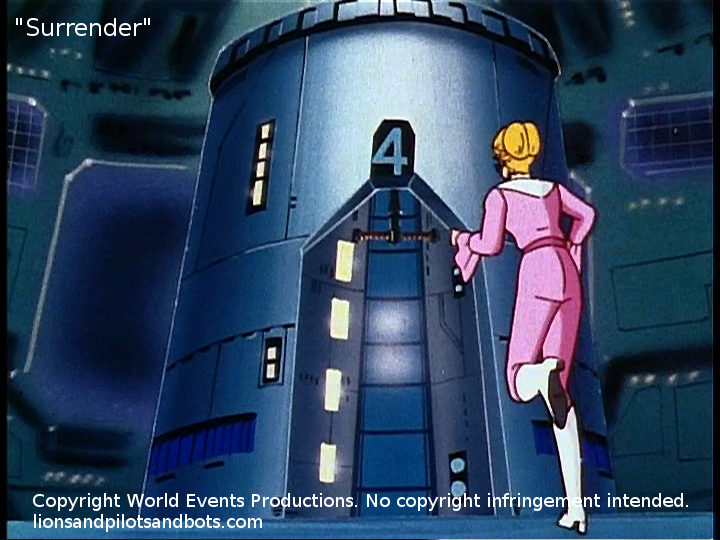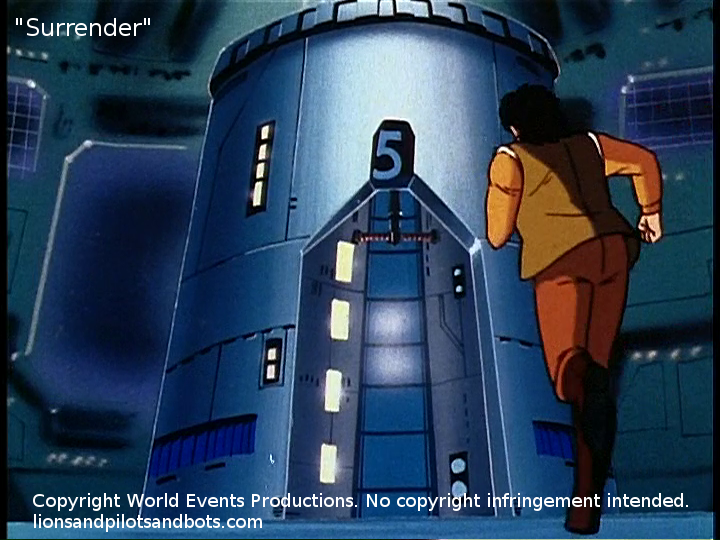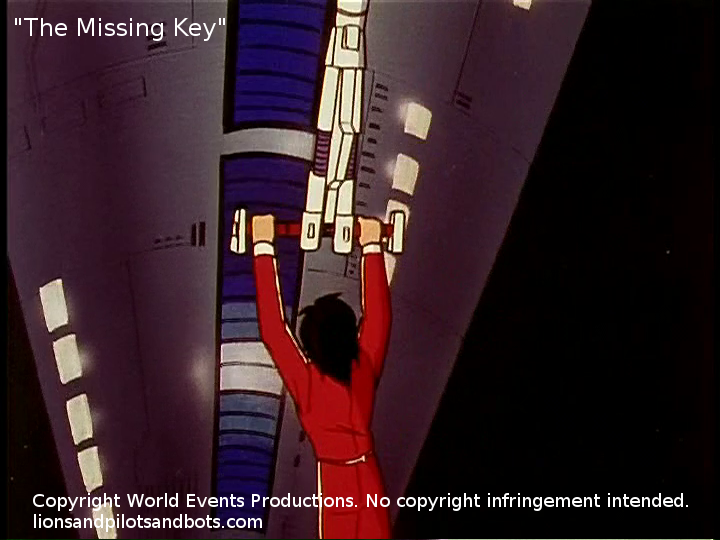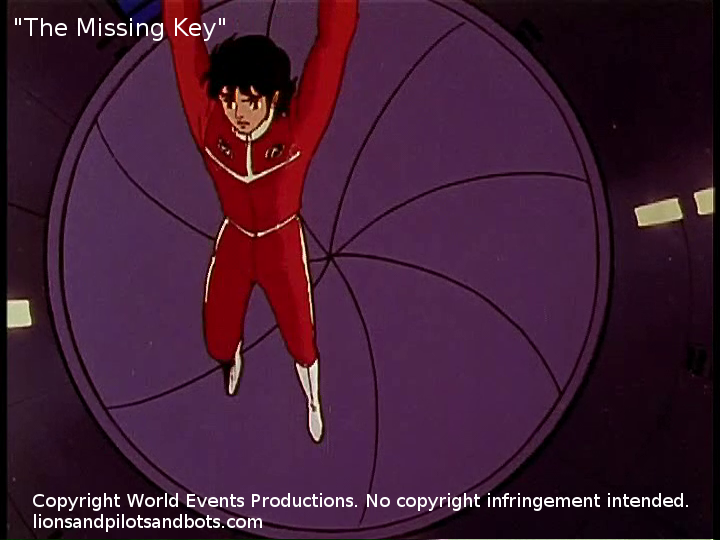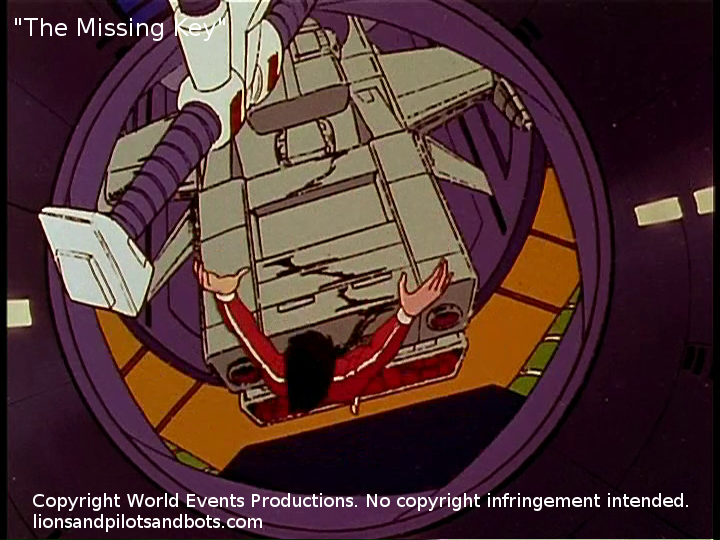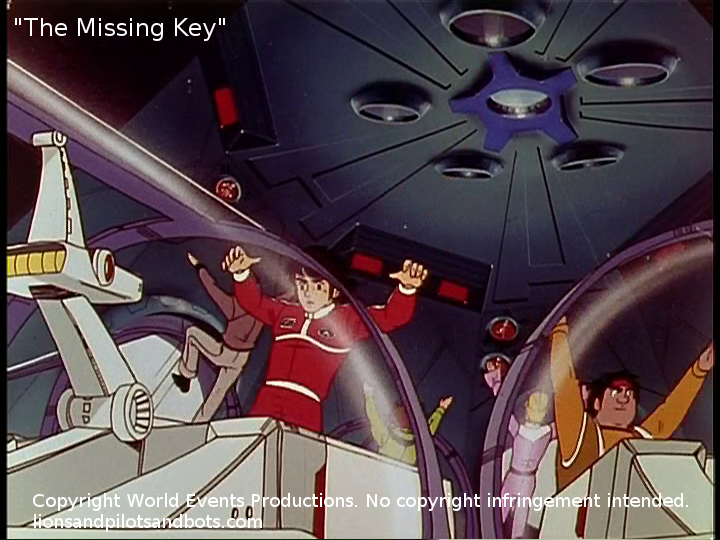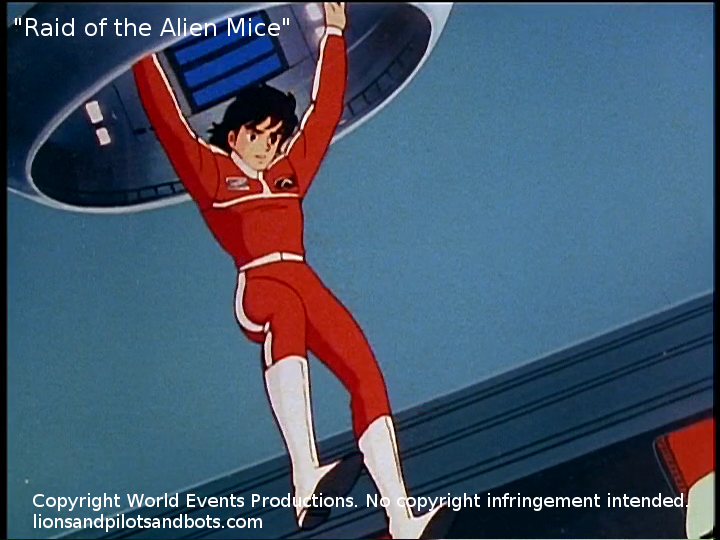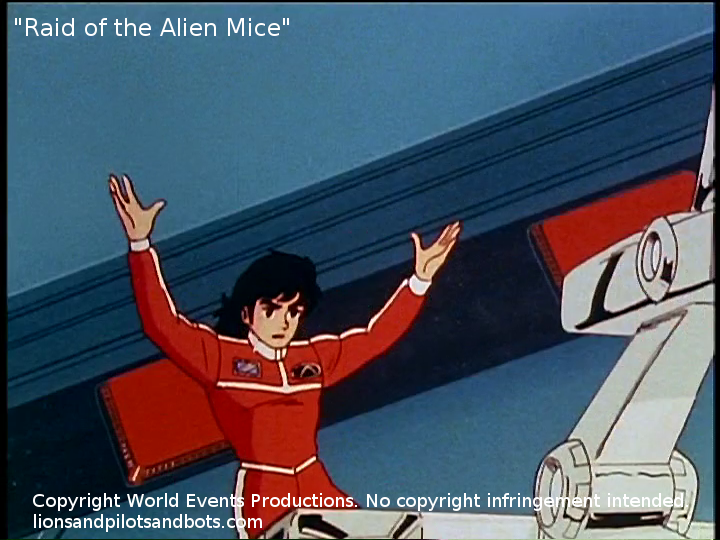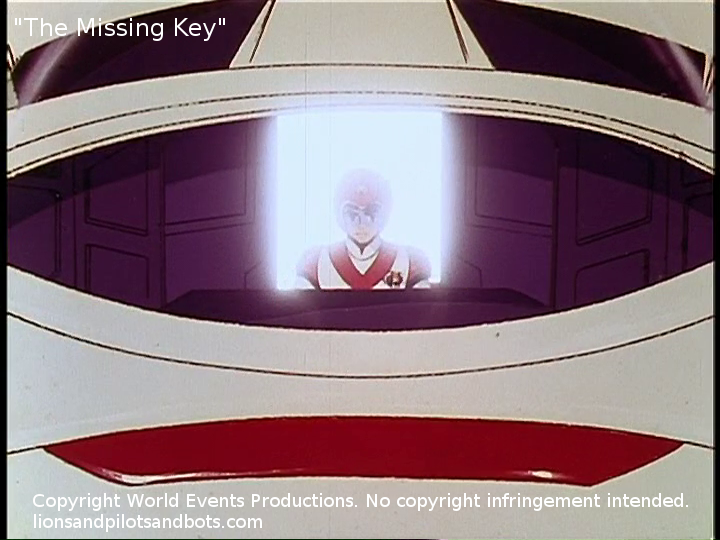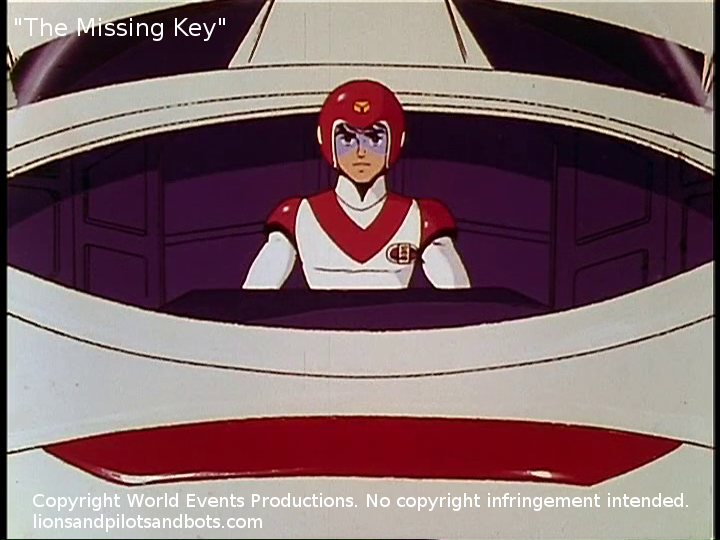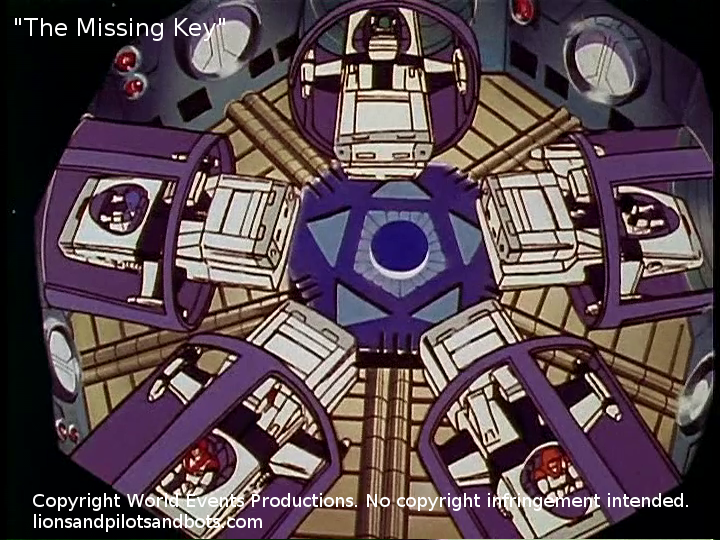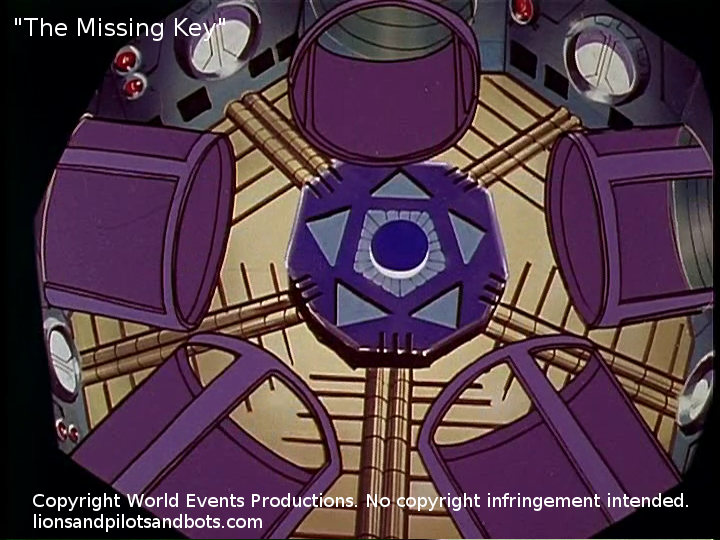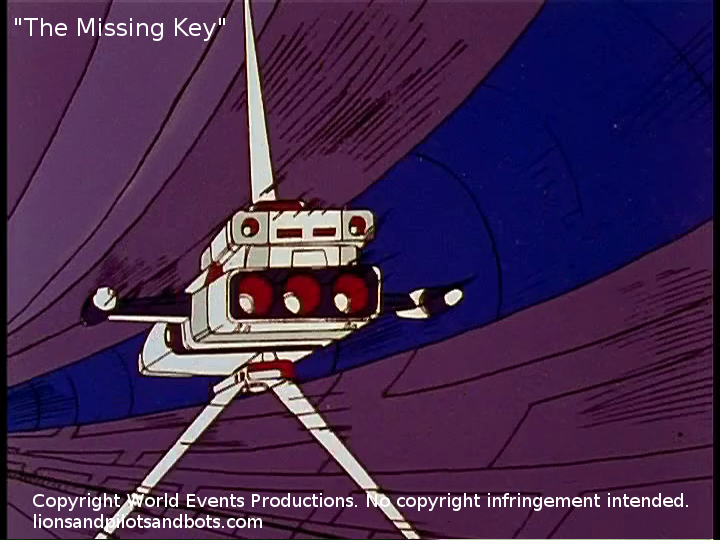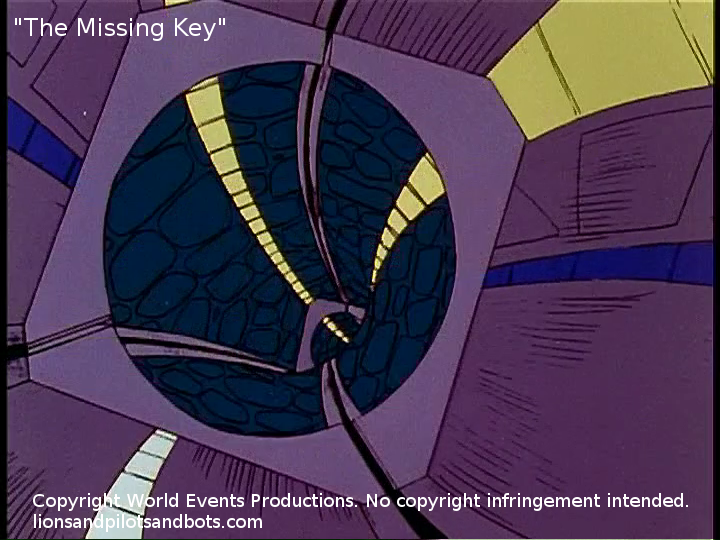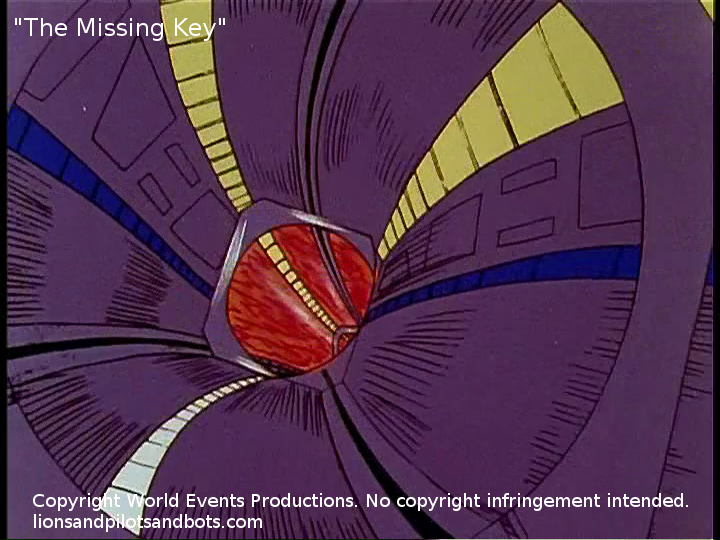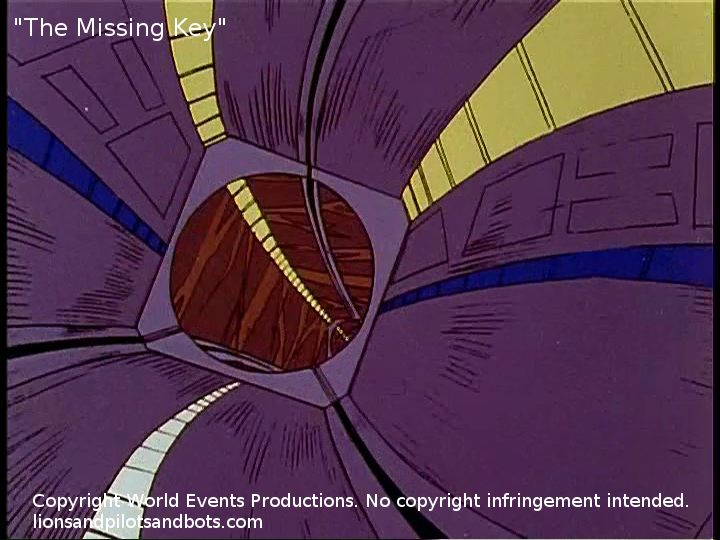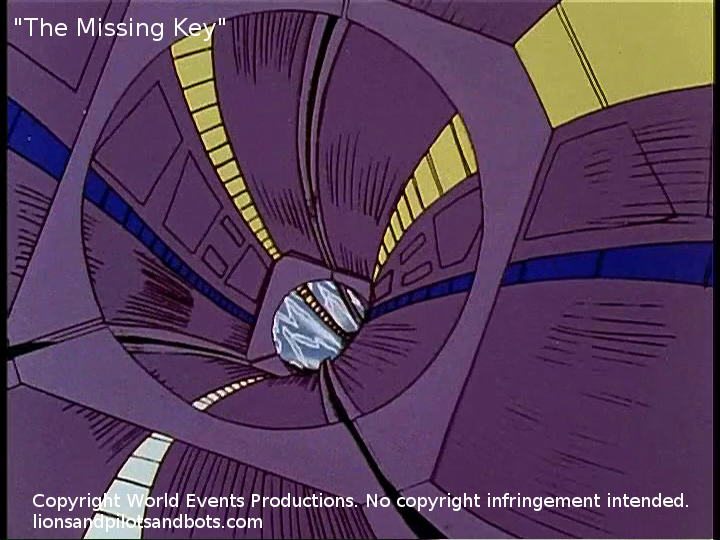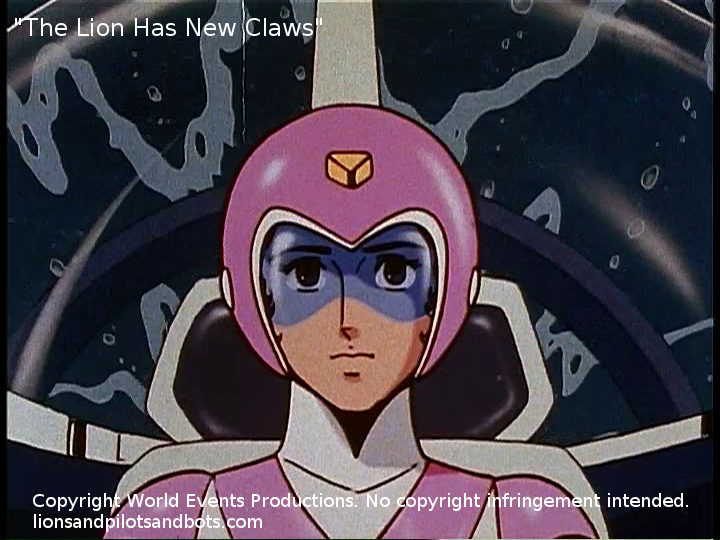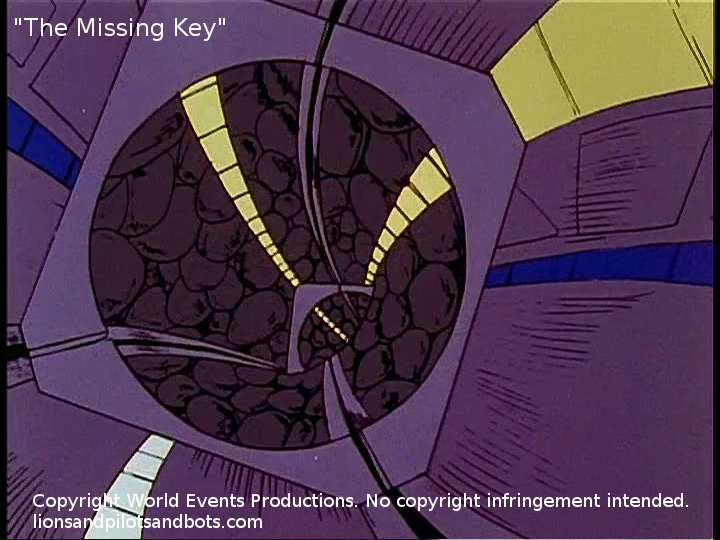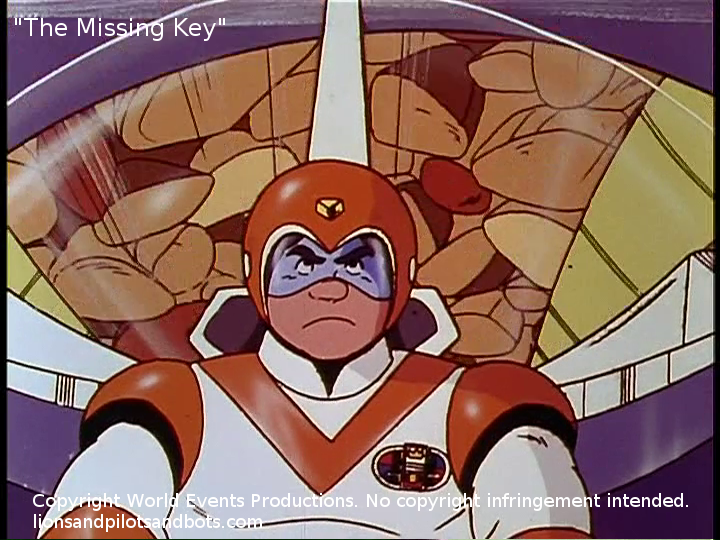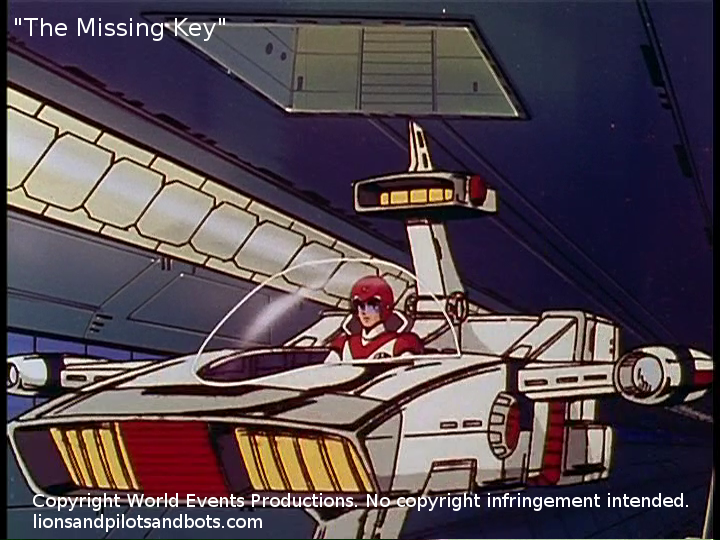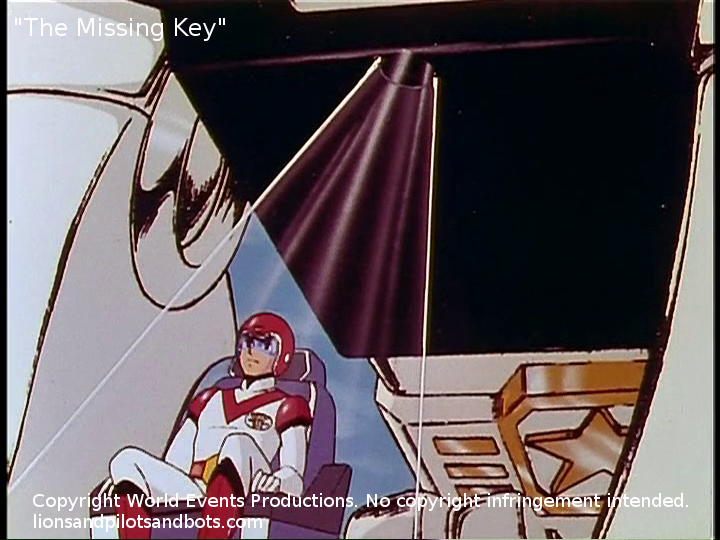This site already examined, in Voltron: Legendary Defender, how the Paladins of Voltron travel from the bridge of the Castle of Lions to the Lion hangars. Now it’s time to see how, in Voltron: Defender of the Universe, the Voltron Force travels from the control room of the Castle of Lions to the Lions’ dens on Arus.
What About Those Dens?
In “Escape to Another Planet,” Coran mentions that, when Haggar first broke Voltron “into five separate units” that “came falling down as mechanical Lions, each one a fighting machine.” Coran then states that “each Lion buried itself in a different part of our planet as it landed.” Accompanying Coran’s tale are visuals of where each Lion lands.
In the same episode, overhead views reveal that the Castle on a small island at the center of a lake. Dense trees encircle the lake, and the Castle faces a much larger forest on the surrounding land. A bridge that starts at the Castle’s main entrance connects the island to the surrounding land. Beyond the circle of trees behind the Castle is a deep canyon, beyond which is a desert, and a pool of lava can be seen in part of the canyon.
All five Lions land near the Castle. It turns out that each Lion’s den would be established at or near its crash site.
Red Lion crashes in the lava pool in the canyon behind the Castle. Coran describes Red Lion’s den as being “beneath the fiery lava of the volcano.” In “A Ghost and Four Keys,” when Lance first operates Red Lion, it exits a cave to one side of the lava pool, and it runs along what looks like a land bridge with lava on either side. It’s not known whether the land bridge was natural or constructed sometime after Red Lion landed.
Green Lion crashes in the forest, and Coran describes the den as being “hidden deep in the forest.” The den is shown as being inside the stump of a giant, fallen tree. It seems unlikely that Green Lion originally landed inside the tree.
Blue Lion crashes in the lake that surrounds the Castle, and Coran describes the Lion’s resting place as “somewhere at the bottom of the lake.” In “Magnetic Attraction,” the lake water has boiled away, and Blue Lion is seen to rest on an artificial dais. An elevated tunnel leads to the dais. Maybe we’ll consider how the artificial dais came to be in a future article.
Yellow Lion crashes in the desert — presumably the area on the other side of the canyon. Coran says that “the Yellow Lion lies hidden out on the sands of the desert.” The den is shown as being inside a gigantic stone sculpture of a lion. It seems unlikely that the statue existed before the Lion landed.
Black Lion crashes somewhere off-screen, but near the Castle. It is later shown to be “on top of the lion monument.” Initially it is hidden inside the lion statue on the tower. In “The Missing Key,” when Keith first operates Black Lion, it breaks out from within the statue, destroying it, and in subsequent episodes, Black Lion simply rests atop the tower, in plain sight.
Now that we know where each Lion’s den is, let’s examine how the Voltron Force pilots get to the dens from the Castle’s control room.
Chutes, Tunnels, and the Launch Area
One of the most prominent features of the control room of the Castle of Lions is a large control panel on the top of a circular, elevated platform. In early episodes of the program, we learn that the control platform can rise some eight or nine feet (2.4 to 2.7 meters), revealing five open doorways, each of which is at the top of a long, vertical chute. The doorways are numbered 1 through 5.
For much of my 1980s childhood, I thought the doorways were located along the periphery of the Castle control room — even though they are shown in multiple early episodes to be beneath the control platform. Why? In retrospect, I can think of two reasons:
- In the 1980s, you couldn’t watch TV on demand. Unless you owned the episode on a licensed videocassette, or you recorded the episode on videocassette, you couldn’t easily rewatch specific episodes.
- In the often reused stock shots of the raised control platform, the platform has a much smaller diameter than it should — and only one doorway is visible in each shot. This was probably a deliberate choice. Had multiple doorways been shown in each shot, multiple pilots would also need to be shown running toward their respective doorways. This would be more costly to animate, and it would limit the usability of each stock shot. For example, if a particular episode showed only Pidge running for his Lion, then a shot of Pidge in the foreground and other pilots in the background couldn’t be used.
To reach the Lions’ dens, each pilot runs through one of the doorways and takes hold of an overhead grab bar with both hands. The grab bar is suspended by a cable, and once the pilot holds the bar, it begins a rapid descent in the chute.
How far the chutes extend isn’t clear, but all five terminate at the ceiling of a circular “launch area.” Inside the chamber are tunnels that extend radially outward from the chamber. Inside each tunnel is a shuttle that points away from the center of the room. The pilots’ grab bars stop descending just above the ceiling of the chamber, so each pilot lets go of the grab bar and seems to fall into the aft section of the shuttle.
(In the DVD version of “The Missing Key,” Allura is seen to be dropping from Blue Lion’s vertical chute — but in the story, it’s supposed to be Sven.)
It should be pointed out that, to this point, each pilot is not wearing his or her uniform. At this point, the shuttle’s aft section seems to be a closet, because soon, at the back of the shuttle’s open cockpit, twin doors slide open, and the pilot emerges, wearing his or her uniform and seated in a chair that slides from the aft section into the cockpit.
The pilots then launch their shuttles — in unison — and each shuttle races ahead in its tunnel. The fact that all five shuttles launch at the same time suggests that every pilot waits for the others to finish changing clothes. Maybe each shuttle’s closet has a fancy machine that quickly removes the pilot’s “civilian” clothes and puts on the pilot’s uniform.
At first, the tunnels have metallic walls, but eventually the walls become mostly transparent. Beyond the tunnel walls…
Black Lion’s tunnel is surrounded by flat stones.
Red Lion’s tunnel is surrounded by lava.
Green Lion’s tunnel is surrounded by earth and tree roots.
Blue Lion’s tunnel is surrounded by water.
Yellow Lion’s tunnel is surrounded by round stones.
By the time each shuttle reaches the end of its tunnel, the tunnel walls are metallic once more. Above the tunnel end is another vertical chute. A track descends from the chute and behind the shuttle’s seat. The track lifts the seat out of the shuttle, and the seat continues to ascend the chute and into a port on the Lion’s chest.
When we next see a pilot in his or her seat, the seat ascends into the Lion’s cockpit through a hatch in the cockpit floor. In later episodes, it’s clear that a Lion’s cockpit is inside its head. This raises the unanswered question of how the pilot seat travels from the Lion’s chest into the Lion’s head, beneath the cockpit.
Once inside a Lion’s cockpit, the pilot puts his or her key into a slot above the large display screen at the front of the cockpit.
Shuttle Tunnel Routes
The five shuttles start in a common room. Each Lion den is located at a distinct elevation:
- Black Lion’s den is atop a tower, above ground
- Red Lion’s den is at the bottom of a canyon
- Green Lion’s den is in a forest, at ground level
- Blue Lion’s den is on the bottom of a lake
- Yellow Lion’s den is inside a statue in a desert, at ground level
Because many if not all dens are at different elevations, one might wonder where the launch area is with respect to the dens.
The closest den is Blue Lion’s, at the bottom of the lake surrounding the Castle. The only thing we know about the depth of the lake is that it must be deep enough to conceal Blue Lion.
If we assume that the Blue Lion shuttle tunnel is fully horizontal — in other words, that it has no slope — then the floor of the launch area must be at roughly the same level as the bottom of the lake.
This implies that Black Lion and Green Lion’s shuttle tunnels descend below the bottom of the lake, since Black Lion’s den is at the far edge of the lake, and Green Lion’s den is in the forest beyond the lake.
Since Red Lion’s den is at the bottom of the canyon, Red Lion’s shuttle tunnel would need to descend below the bottom of the canyon. Either the tunnel has a downward slope to rival the tallest roller coaster, or it descends more gradually in a spiral or a similar shape.
Yellow Lion’s den is on the other side of the canyon, so its shuttle tunnel must descend like Red’s does. Once Yellow’s shuttle tunnel passes beyond the canyon, it might ascend to shorten the length of the vertical chute from the tunnel to the den on the surface.
In “Raid of the Alien Mice,” a solar generator outage prevents the shuttles in the launch area from exiting. Keith, Lance, and Hunk are forced to race to their Lions on foot. They are seen to exit the launch area, and then to exit the Castle of Lions itself from the ground-level front entrance. They attempt to cross the bridge from the Castle’s island, but they are fired upon, forcing them to dive into the lake.
Black Lion’s Vertical Chute
The tower on which Black Lion rests has legs which span the bridge. How does the vertical chute from the shuttle tunnel reach the main body of the tower? Presumably, during the launch sequence, a short segment of vertical chute from either below ground or in the tower extends to connect the below-ground chute segment with the in-tower chute segment.
Conclusion
The path from the control room of the Castle of Lions to each Lion den is interesting. And I thought about this stuff waaaaaaaaaaay too much.

